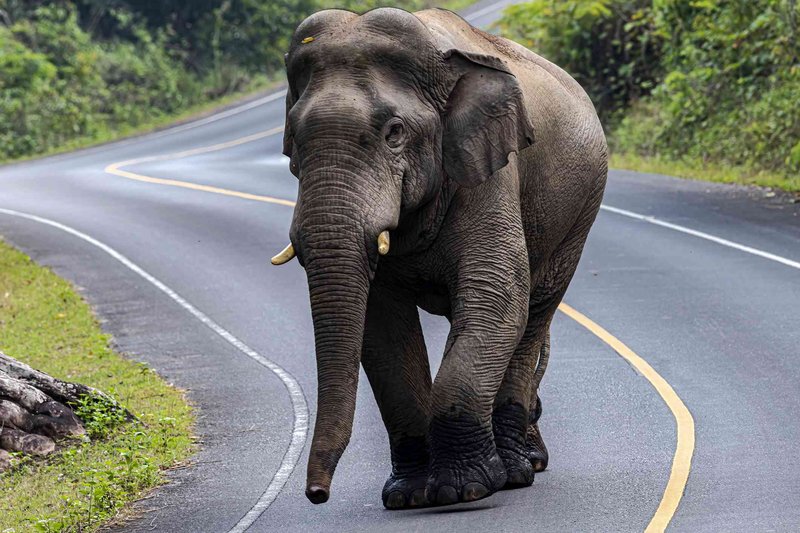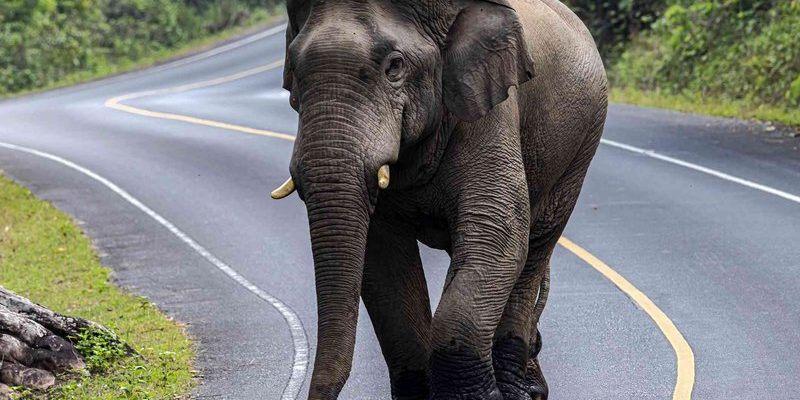
Let’s dive into the world of these magnificent creatures and explore their status, the challenges they face, and the global efforts aimed at conservation. Imagine chatting with a friend over coffee, exchanging insights over how we can ensure that these gentle giants continue to roam the earth for generations to come. It’s a conversation worth having!
The Status of Indian Elephants
To get a real sense of where the Indian elephant stands today, we need to look at the numbers. The Indian elephant is classified as endangered on the IUCN Red List. Their population is estimated to be between 25,000 to 30,000 individuals, a stark decline from their previous numbers. This decline is mainly due to habitat loss, poaching, and human-elephant conflict. So let’s break this down a bit.
Habitat Loss: As more forests are cleared for agriculture and urban development, elephants lose not just their homes, but also their food sources. They require vast areas to roam, and when those areas shrink, so does their chance of survival. Imagine if your house suddenly became half its size!
Poaching: Sadly, elephants are often targeted for their ivory tusks. Though Indian elephants lack the long tusks characteristic of African elephants, they are still hunted for their skin and other body parts. This illegal trade has serious implications, contributing to their dwindling population.
Human-Elephant Conflict: As humans expand into elephant territories, conflicts arise. Elephants may wander into farms, trampling crops. This situation leads to retaliation from farmers, who may harm these majestic creatures. It’s like a neighborly dispute that turns ugly, affecting both parties.
Distribution and Habitat of Indian Elephants
Indian elephants once roamed across a large part of the Indian subcontinent, from the foothills of the Himalayas in the north to the tropical forests of the south. Nowadays, their range has become much more fragmented. They primarily inhabit forested areas, grasslands, and swamplands.
Their preferred habitats include:
- Tropical and subtropical moist forests: These lush areas provide shelter and food.
- Dry deciduous forests: Although not as dense, these forests are crucial during the dry season.
- Grasslands and scrublands: These areas offer a variety of plants that are essential for their diet.
- Swamps and wetlands: Elephants are excellent swimmers and enjoy spending time in water.
But with urbanization and agricultural encroachment, these habitats are shrinking. It’s like trying to fit a square peg into a round hole; it just doesn’t work.
Why Conservation Matters
You might wonder why we should care about the conservation of Indian elephants. These creatures are not just another animal; they play a crucial role in their ecosystems. They help maintain the biodiversity of their habitats by acting as “ecosystem engineers.” This means they help shape their environment by dispersing seeds and creating clearings in forests.
Furthermore, they hold cultural significance in many regions. Elephants are often seen as symbols of strength, wisdom, and loyalty. In many communities, they are celebrated in festivals and rituals, embodying a deep connection between humans and nature.
Protecting Indian elephants is essential not just for their sake but for the health of the entire ecosystem. They help keep the forest flourishing, which in turn supports countless other species, including us!
Current Conservation Efforts
There are numerous organizations and initiatives focused on conserving Indian elephants. These efforts are critical in addressing the challenges they face. Here’s a closer look:
Protected Areas: India has established several national parks and wildlife sanctuaries to provide safe havens for elephants, like the Kaziranga National Park and Periyar Wildlife Sanctuary. These areas are not just for the elephants; they also protect other wildlife and promote biodiversity.
Community Engagement: Many organizations are working to involve local communities in conservation efforts. By educating people about the importance of elephants and providing alternative livelihood options, they can reduce human-elephant conflicts. For example, promoting eco-tourism allows communities to benefit financially while protecting wildlife.
Anti-Poaching Initiatives: Law enforcement is crucial in the fight against poaching. Programs aimed at monitoring and patrolling elephant habitats help deter poachers and keep these gentle giants safe.
It’s inspiring to see the collective effort toward conservation, but there’s still much more work to be done.
The Role of Technology in Conservation
In recent years, technology has become a valuable tool in conservation efforts. From GPS tracking to advanced monitoring systems, technology is helping to protect Indian elephants in innovative ways.
GPS Tracking: Conservationists employ GPS collars to monitor elephant movements. This data helps in understanding their migratory patterns and identifying potential conflict areas. With this information, steps can be taken proactively to prevent human-elephant conflicts.
Camera Traps: These devices help researchers monitor elephant populations and study their behaviors without disturbing their natural habits. It’s like setting up a friendly camera to catch those fun moments without interrupting the game.
Mobile Apps: Some organizations have developed apps that enable local communities to report elephant sightings or incidents of poaching. This crowdsourcing of information strengthens community involvement in conservation and enhances response times to threats.
Technology is providing new avenues to help save Indian elephants, making conservation efforts more effective.
What You Can Do to Help
You don’t have to be a conservationist to make a difference! Here are simple ways you can contribute to the cause:
- Spread Awareness: Talk about the plight of the Indian elephant with your friends and family. The more people know, the more they can care.
- Support Conservation Organizations: Consider donating to or volunteering with organizations focused on protecting elephants and their habitats.
- Choose Sustainable Products: Support companies that prioritize sustainability and ethical sourcing. This can reduce habitat destruction and poaching.
- Be a Responsible Tourist: If you visit areas where elephants live, make sure to do so respectfully. Support eco-friendly tourism that promotes conservation.
Every action counts, and collectively, we can create a significant impact.
The Future of Indian Elephants
While the current situation may seem dire, there is still hope for Indian elephants. With continued conservation efforts, community involvement, and advancements in technology, we can work towards a future where these gentle giants thrive once again.
The journey won’t be easy, but remember that every little step counts. Just like in our daily lives, persistence and passion can lead to meaningful change. Let’s hold on to that hope and work together for the conservation of the Indian elephant.
In conclusion, the Indian elephant is indeed endangered, but it’s not too late to turn the tide. By understanding the challenges they face and actively participating in conservation efforts, we can ensure that future generations will have the opportunity to marvel at these incredible animals. So, let’s get involved and make our planet a better place for both the Indian elephant and ourselves!

